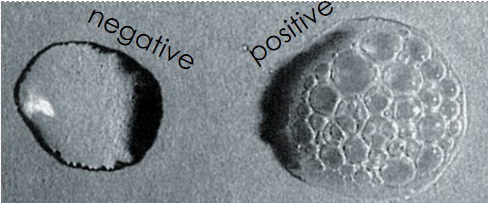BIOL 240 Midterm 2
1/53
Earn XP
Description and Tags
Topics 5 -7
Name | Mastery | Learn | Test | Matching | Spaced |
|---|
No study sessions yet.
54 Terms
What are viruses?
They are subcellular parasites that are not considered alive b/c they have no metabolism & do not replicate independently.
Viruses have been around for a long time, since they have been seen infecting eukaryotes, bacteria, & archaea.
What is Bacteriophage?
Who discovered this?
Bacteriophage was first used in the early 1900s to describe viruses that infect bacteria, which are the most abundant viruses on Earth.
Felix D’ Herelle discovered this term and coined the term plaque.
What did Walter Reed do?
he conducted groups and controls from local communities and soldiers to show that yellow fever was a virus transmitted by mosquitoes in 1901.
What is the structure of a virus?
Are intracellular obligate parasites, typical b/w 10-100 nm. The genome is typically a few thousands to 200,000 nucleotides long.
Note: The t4 bacteriophage is the only virus that can affect E. coli
What are the exceptions of the small size of viruses?
Megavirus chilensis (dsDNA virus of ameobas) have a genome of > 1.2 Mb pairs, encodes 1,200 proteins
Mimivirus (dsDNA virus of ameobas) can be 400 nm in diameter w/ a 1.2 Mb pair genome coding for 979 proteins
Mimic bacteria to look like G+ cells
Pandoravirus (dsDNA virus of amoebas) w/ ~ 2.5 Mb genomes, 1 micron in diameter
Note: mostly in amoeba b/c they tend to eat everything
What does the viral structure contain?
Single or double-stranded DNA or RNA (linear or circular)
Protein shell (capsid) around genome
Composed of many capsomere proteins
Capsid and genome together = nucleocapsid
Possible envelope (cell-derived membrane around capsid)
ALL viruses have nucleic acids & genomes and capsids.
What are capsids?
The entire genome has 4 genes to create the capsid. It is very effective infectious particle that can go a lot of places.
Can be helical or icosahedral symmetry or be irregular or complex shapes.
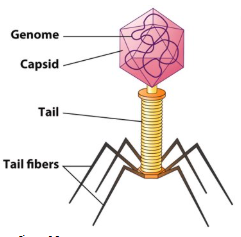
What are in viral envelopes?
Enveloped virus have a plasma membrane surrounds the nucleocapsid. They possess a cell-derived lipid bilayer from the host that has a membrane. I.e. nucleus, ER, Golgi apparatus, nucleus, etc.
Naked/ unenveloped virus do not have plasma membranes. They only consist of a capsid to protect the genome.
What is viral replication?
Adhere attach
stick to the host cell by receptors
Enter
Uncoat
release genomes
Synthesis
express & replicate genome
Assembly
create new virus particles
Exit
new particles leave the cell
Note: Cells will die b/c it uses too much resources to make these viruses
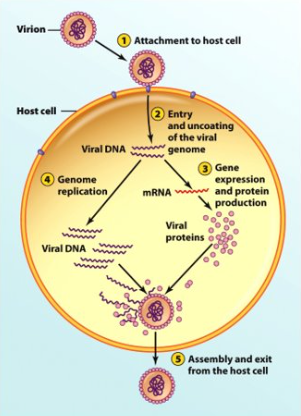
How do virus’ enter the cell?
Entering the cell is arguably the most important part of the viral replication cycle. i.e. HIV & CDA receptors act on T cells.
To enter a host cell, most viruses possess an attachment protein that binds to a receptor protein on the surface of the host. Non-enveloped viruses and enveloped viruses differ in their entry mechanisms.
Bacteriophage use their tails to penetrate the host cell’s plasma membrane and inject their genomes
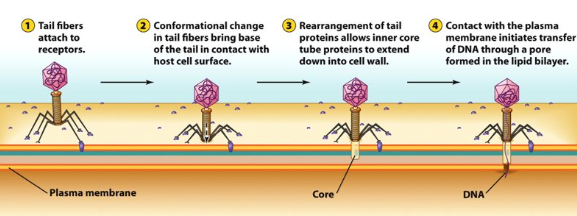
How do viruses enter animal cells?
Through endocytosis & membrane fusion b/c animal viruses don’t have to contend w/ a cell wall.
How do viruses enter plant cells?
Often depend on damage to plant tissue to open a spot in the cell wall as there are no receptors / membrane fusion b/c of the cell wall.
i.e. insects feeding on plants, wind damage, hail/ rain damage, fire damage, human-induced damage
Bacteriophage replication
Lytic cycles have viruses enter, replicate, and lyse host cells
Lysogenic cycle have page integrate their genome into the host cell’s genome, becoming a prophage
prophage genome is replicated along w/ the host cell’s until stress which can then enter the lytic cycle
Temperate phage vs virulent phage
Temperate phage can be both lytic or exist as a prophage & virulent phage always have to be lytic
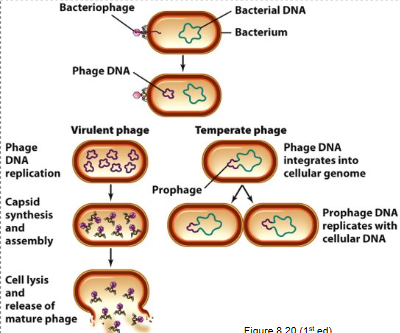
How do lytic viruses replicate?
After entering a cell, or inserting their DNA, most viruses immediately undergo a lytic cycle. Lytic viruses replicate and lyse infected host cells and surrounding cells.
In an isolated cultures like a test tube, eventually all the host cells will be destroyed and only the viral particles will remain. For many viruses, the lytic cycle is the only option.
What are temperate viruses?
Can undergo either lytic or lysogenic cycle. Some viruses appear to exercise temperance meaning abstinence from the lytic cycle. They can remain integrated through many generations yet can enter the lytic cycle again.
For temperate viruses that infect bacteria, the virus genome inserted within the host genome is called a prophage. There are environment & cellular cues that result in reversion of prophage back into the lytic cycle, including stress, UV light, etc. Reversion to lytic cycle may be associated w/ an influx of nutrient, where the cells begin dividing & copying their genomes.
Advantage for it to undergo lysogenic cycle = disadvantages of being a lytic phage
killing host cells can result to killing too many for continued infection
lysogenic cycle helps provide a potential advantaged in terms of allowing virus to hide & wait for condition to be right or just before a cell dies
How are bacteriophage cultivated?
What is the 2 body problem?
Viruses can be cultivated by inoculating the appropriate host cells and collecting the replicated viral particles. The particles are then purified by centrifugation or filtration
The 2 body problem is that you must grow the host & the virus that infects the host.
The clearing zone is where the plaque with and ALWAYS starts w/ 1 virus. Good b/c sometimes you want a clonal environment.
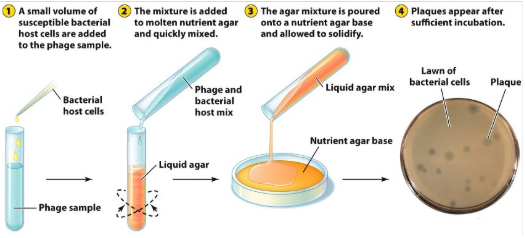
Where did viruses come from?
Coevolution hypothesis: viruses originated about the same time as other microbes & have been coevolving w/ them
Regressive hypothesis: viruses are previously alive organisms that have evolutionarily regressed into host-dependent particle
Progressive hypothesis: viruses originated from genetic material that gained the ability to replicate and be transmitted semi-autonomously
Note: do no assume one is right and the others are wrong, all are possible and could be true for some viruses
Cultivating Animal viruses
Tissue culture of host cells used to grow targets for the viruses for the purpose of vaccines. Cultures must be kept sterile & bacteria-free.
How are viruses purified?
After cultivated the phage, you want to purify them to study it away from cells that have grown with it. It usually begins w/ simple filtration to remove large cells and cellular debris. Viruses then purified and concentrated w/ centrifugation:
Differential centrifugation
Gradient centrifugation
What is differential centrifugation?
It involves centrifugation at different speeds of spinning.

What is gradient centrifugation?
This is a one-step centrifugation. It depends on diff densities of viral components and particles.
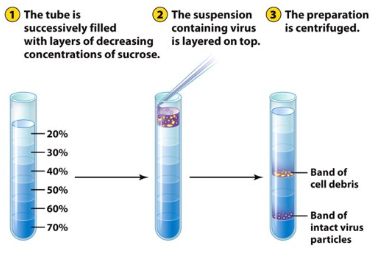
Viral Quantification
It is not easy or straightforward. Usually measured as a titer, or [ ] of a viruse preparation. Methods include:
Direct count
Hemagglutination assay
Plaque assay
Endpoint Assays
What is direct count in viral quantification?
e- microscope is used to visualize a known volume of a material. Viruses within it are counted and scaled up to determine titer, requires an expensive, specialized microscope
Con: doesn’t differentiate b/w infectious and non-infectious viral particles
What is hemagglutination in viral quantification?
It exploits the trait of some viruses to stick to red blood cells, causing them to form a gel mat. It is cheap, easy, and fast w/o a microscope
Some viruses won’t do this
It doesn’t differentiate viable/non-viable viruses
Doesn’t give a virus #
Only works w/ animal viruses that can recognize the syalic residue
What is plaque assay in viral quantification?
Virus is diluted and placed on target cells. Plaques are counted to determine plaque-forming unit (PFU) titer of original suspension. It is useful for phages & plant viruses & a very specific measure
What is endpoint assay in viral quantification?
Tissue culture infectious dose 50 (TCID50)
amount of virus needed to induce a CPE (cytopathic effect) in 50% of cultured cells
most sensitive & most responsive
Lethal dose 50 (LD50)
amount of virus needed to kill 50% of test animal subjects
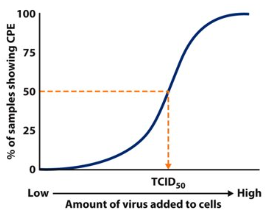
How are virus named?
Historically quite caried, it can be simple letter/number combinations, organisms they infect, location of discovery, appearance, &disease cause
There is also ICTV classification scheme where it is based on order, family, subfamily, genus, and species.
What is the Baltimore classification system?
It is based around mRNA production methods. It separates viruses into 7 classes that are developed by David Baltimore
Note: all viruses rely on host for translation (ribosomes)
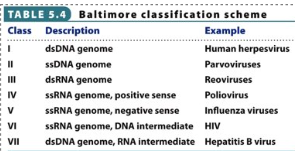
How are viruses identified?
e- microscopy is the first step in identification which relies on visual observation of viral morphology.
Nucleic Acid analysis is a PCR and reverse-transcriptase PCR used to identify viruses by genome sequences & is used to study viral evolution patterns.
What are viroids?
They are virus-like particles. It consists of only naked RNA, are extremely small, have a high degree of internal complementarity, resistant to ribonucleases, and so far, only observed to cause disease in plants.
RNA polymerase hijacked going round and round
What are Prions?
Virus-like particles that only have protein & nothing else. They are different infectious agents that are responsible for transmissible spongiform encephalopathies(TSEs), such as mad co disease)
Misfolded proteins coming into contact w/ regular proteins
Their replication method is unclear as it is thought to revolve around conversion of protein conforms. from normal to abnormal form over time.
What is virology today?
Virology and medicine are closely involved.
cancer causing oncoviruses
cancer-destroying oncolytic viruses
gene therapy
phage therapy
Virology continuous to be involved in examination of emerging global diseases
What is CRISPR?
Clusters of regularly interspaced short palindromic repeats. Involves Cas enzyme.
Universal defense strategy that cells used to destroy virus DNA. In destroying DNA, it also captures and stores it so that it can recognize future virus. Bacteria, archaea, & eukaryotes have it
What are the types of physiological diversity?
Phylogenetic diversity which is the result of 4B years of evolution
Metabolic diversity, if there is a niche to exploit, microorganisms have adapted to exploit it. It is limited only by constraints of chem & physics.
What is the cell metabolism?
Cells have to convert chemical compounds into cellular matter.
Nutrients from outside of the cell are transformed into new cell materials through anabolism (or biosynthesis). Requires energy for biosynthesis & other processes
Energy is often derived from the oxidation of chemical compounds in the process of catabolism
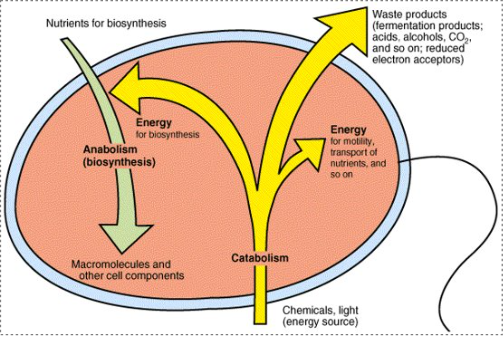
What are the nutritional requirements?
Macronutrients are required by ALL cells the build macromolecules. C, N, P, S, O, H
Micronutrients are required by some cells, including Fe, Cu, Na, Mg, Mn, and others
What are the fundamentals of nutrition?
Energy Source
for oxidation, it provides e- for ETC
2 types: Photo (photosynthetic; organic or inorganic e-") OR Chemo (organic or inorganic)
Electrons
Chemo → organo (i.e. glucose, acetate) OR litho (i.e. H2, NH3, S0, NO2-)
Carbon Source
for cell maintenance and divison
Fixed organic (C-C bonds) = heterotroph
Gaseous inorganic C(CO2) = autotroph
There is metabolic versatility so some can switch depending on the conditions
Types of energy sources
Chemoorganotrophs
Energy from oxidation & e- of organic compounds
Chemolithotrophs
Energy from oxidation & e- of inorganic compounds
Found only in prokaryotes
Phototrophs
Energy from light captured by pigments
May be oxygenic or anoxygenic
Electrons are required by microbes for the completion of biochemical reactions. Organotrophs and lithotrophs gain electrons from organic and inorganic molecules, respectively
Types of Carbon Soources
C is a major requirement for all organisms for energy storage/ manipulation & structural purposes.
Autotrophs are primary producers that fix C directly from CO2
Heterotrophs use organic molecules produced by auotrophs
What is the point of creating energy?
The whole point is to make currency so that it can be used later. You want to store it and than save it.
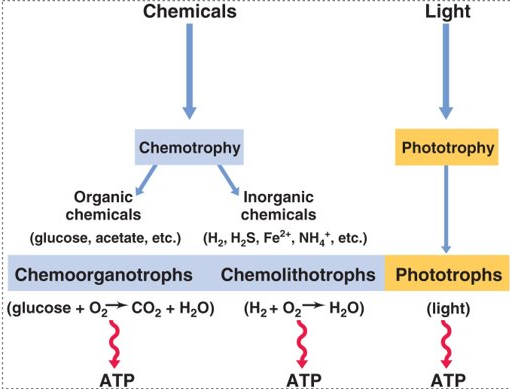
Acquisition of Nitrogen
Microorganisms must be able to incorporate N into a usable form. Assimilation of ammonia into glutamate/ glutamine is most common.
It is critical to make numerous macromolecules like AA & nucleic acids.
I.e. NADP+ → NADPH + H+
How does nutrient [ ] affect growth?
The growth rate is dependent on the amount of nutrients available. Key nutrient available in the lowest amount will limit growth.
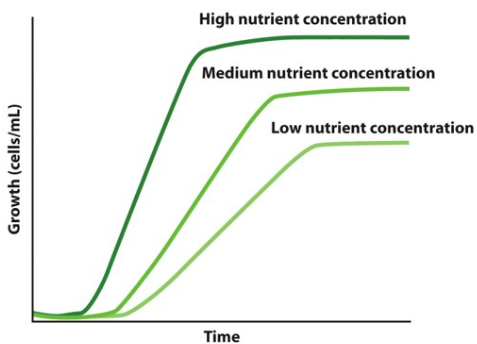
What are the effects of oxygen?
Aerobic growth uses O2
Obligate aerobes require O2
Microaerophiles grow best in low levels of O2
Anaerobic growth occurs w/o O2
Aerotolerant anaerobes aren’t harmed by O2 but don’t use it
Obligate anaerobes cannot grow when O2 is present
Facultative anaerobes can grow in the absence of O2 but grow better when it is present
What are toxic oxygen species?
Impact of O2 respiration on a cell depends on a cell’s available defenses.
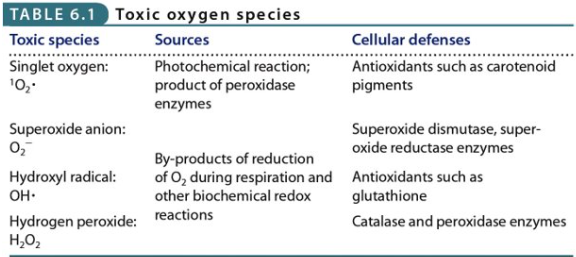
What is the Catalase test?
Some microorganisms produce catalase
H2O2 + H2O2 → 2H2O + O2
